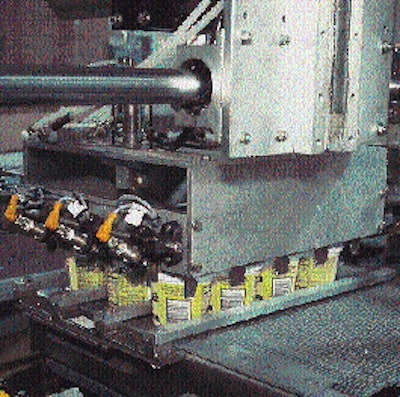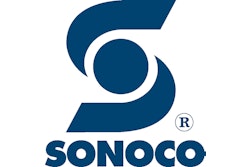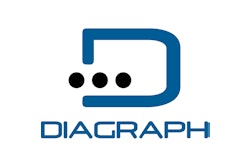Sour cream filling got sweeter this summer at the Marigold Foods plant in Farmington, MN, when the Minneapolis-based firm replaced an aging packaging line with a new filler, case packer, and case coder. Because the new line allows Marigold to increase filling speeds from 90 cups/min to as high as 180/min, five three-shift days are now enough to meet demand. Weekend shifts, once common, now are rare. Filling accuracy is much improved, too. The line fills 8-, 12-, 16-, 24- and 32-oz injection-molded polypropylene containers. Unlike the previous rotary filler with its positive displacement pump, the new filler from Osgood (Oldsmar, FL) offers more precise control by piston fillers. "We were getting quarter-ounce variance from cup to cup and really needed to improve fill accuracy," says assistant plant manager Dennis Wittlief. The Osgood Model 4600 four-lane filler/sealer/capper has improved fill accuracy to within ± .05 oz. It also has reduced waste because it will not dispense product if a cup is missing. Also, it won't seal a cup that's empty or cap a cup that's missing its inner seal. Added advantages are gained in the area of product freshness. The filler is equipped with a HEPA enclosure for air filtering, which permits only sterile air to come into contact with the product for improved quality. Application of a heat-sealed inner membrane before capping helps maintain product freshness, too, in addition to providing tamper evidence. It eliminated a polyvinyl chloride shrink band formerly used for tamper evidence. The switch is basically a wash as far as material costs are concerned, but plant manager Richard Brooks says the new approach is much more efficient from an operations standpoint. Chief maintenance manager Mike Niebur agrees. "In the old arrangement there was a filler/lidder, then a tamper-evident bander, then a heat tunnel to shrink the band," says Niebur. The new system performs all these functions. Advantages of position controller Making the filler even more valuable to Marigold is its use of a new position controller, the AstroPLX/100 Programmable Limit Switch from Astrosystems (Lake Success, NY). Osgood fillers on other packaging lines at Marigold utilize an older style of position controller based on cams. Both the old and the new versions serve the same purpose: Actuation of a series of operations--cup dispense, fill, seal, cap--in sequence as a motor turns the filling machine's main shaft. But the AstroPLX/100 has certain advantages over mechanical cam-type limit switches. Chief among them is what might be called its "operator friendliness." To adjust the timing of any one operation with mechanical limit switches, the operator must shut down the machine, open a panel, reposition the cams with a wrench, and get back up running. The process is considerably simpler with the AstroPLX/100. In fact, the filler doesn't even have to be shut off. A programmable limit switch consists of three items: transducer, encoder, and comparator. The transducer translates rotary motion into electrical signals that represent the position of the rotating shaft, which in this case rotates at about 40 rpm. "Position" refers to how many degrees the shaft has rotated in each 360-degree revolution and to the number of revolutions that have been made. The transducer signals the encoder, which translates the position into digital codes. The comparator continuously compares shaft position, as expressed in digital codes, to a set of preprogrammed positions, or "setpoints," at which various machine functions must take place. Whenever the shaft rotates to one of these setpoints, the comparator triggers a relay to activate a particular operation, such as cup dispensing or filling, for example. Since the PLS operates via electronics, adjustments in timing of machine functions are made at a keypad with alphanumeric display. For example, the operator determines the timing of "off" and "on" on the vacuum pick-up of cup lids from the magazines. Via the display, he finds the machine is programmed to activate the pick-up each time the shaft rotates between 100 and 200 degrees. If the operator feels he can solve the timing problem by changing the setpoints to 95 and 195 degrees, he enters those on the keypad of the AstroPLX/100 while the machine is running. Similarly, making size changes is easy because the PLS can store up to 16 different programs of setpoints. So if something is changing, whether size or product viscosity, the operator can reset the complete machine by calling up the proper program on the keypad. Mechanical changes via gears or cams are a thing of the past. Denesting is first Production begins with mechanical denesting of the injection molded PP cups, from Landis Plastics (Chicago Ridge, IL), and four-across placement into the carrier plate that will bring them through filling, lidding and sealing. The cups pause first for product filling. Then they proceed toward a heat sealing station where a 2-mil metallized polyester with a laminated heat seal layer is applied from rollstock. The material unwinds into a position immediately above the cups and four heat seal tools come down to seal film to cup. The material comes from Clear Lam Packaging (Elk Grove Village, IL). Finally, the cups catch the lip of a PP lid, which is pressed down tight by a roller. Finished cups are pushed up from the carrier plate so that a sweep bar can sweep them forward and into the right angle turn of a conveyor belt. At this point the cups are single-filed, though not for long. Shortly after passing an ink-jet date coder from Videojet (Wood Dale, IL), a pair of star wheels directs them into four lanes. On the day PW visited, 12-oz containers were being diverted into four lanes, so every other container in each starwheel was gripped by a vacuum cup long enough to be diverted to a distant lane. The four-across cups are conveyed into a Cetra wraparound case packer from Newtec (St. Louis, MO). It has a reciprocating pick-up head with mechanical grippers that grip each individual cup by its lid. Then it strokes forward with its load of cups, 12 in this case, into the loading station. At the same time, from the opposite direction, a corrugated blank is fed automatically into the loading station and held there. When the pick-up head is aligned above the blank, it plunges down into the flat blank, forming a U-shape around the cups. The head then releases its cups and strokes back for another load. The case is pushed through tucking arms and its flaps are hot melt glued by a Nordson (Duluth, GA) unit. The wraparound case is a big improvement over the corrugated sleeve and shrink film used on the previous sour cream packaging line, says Brooks. For one thing, it costs a little less. But it's also a smoother and more compact approach, and, says Brooks, it allows the dairy products to cool faster in refrigerated storage than the film-wrapped sleeves did. Case printing on-line Finished cases are conveyed to a remote station for manual palletizing. A short distance beyond the discharge of the case packer, each case passes a PEL ink-jet system from Diagraph (St. Louis, MO). With two print heads mounted on each side, it can print up to four lines of information on each case. This lets Marigold purchase minimally printed case blanks in large volumes and custom print them with the Diagraph system. It represents another improvement over the line that was replaced, which had only a roller coder to imprint cases. In addition to increases in filling speeds and accuracy, the new filling machine adds flexibility to Marigold's operation. "Though it's most often used for sour cream, we can run yogurt or cottage cheese on it, too," says Niebur. "So any time we face unusual demand for yogurt or cottage cheese, we can divert some of that volume to our sour cream line." Marigold's yogurt cups, says Niebur, take precut inner membrane seals instead of the roll-fed metallized polyester used on the sour cream products. But the filler manufacturer provided the tooling needed to apply such seals. The new line has been operating commercially at Marigold since August, and according to Niebur, efficiencies are continuing to climb as plant personnel grow accustomed not only to the new hardware but also to the electronics package supplied by Astrosystems. As for Niebur himself, he's sold on the AstroPLX/100. "It's not that the older mechanical controllers aren't effective, it's just that they aren't as user friendly," says Niebur. "We're looking at retrofitting at least one other Osgood filler with a programmable limit switch, too."






























